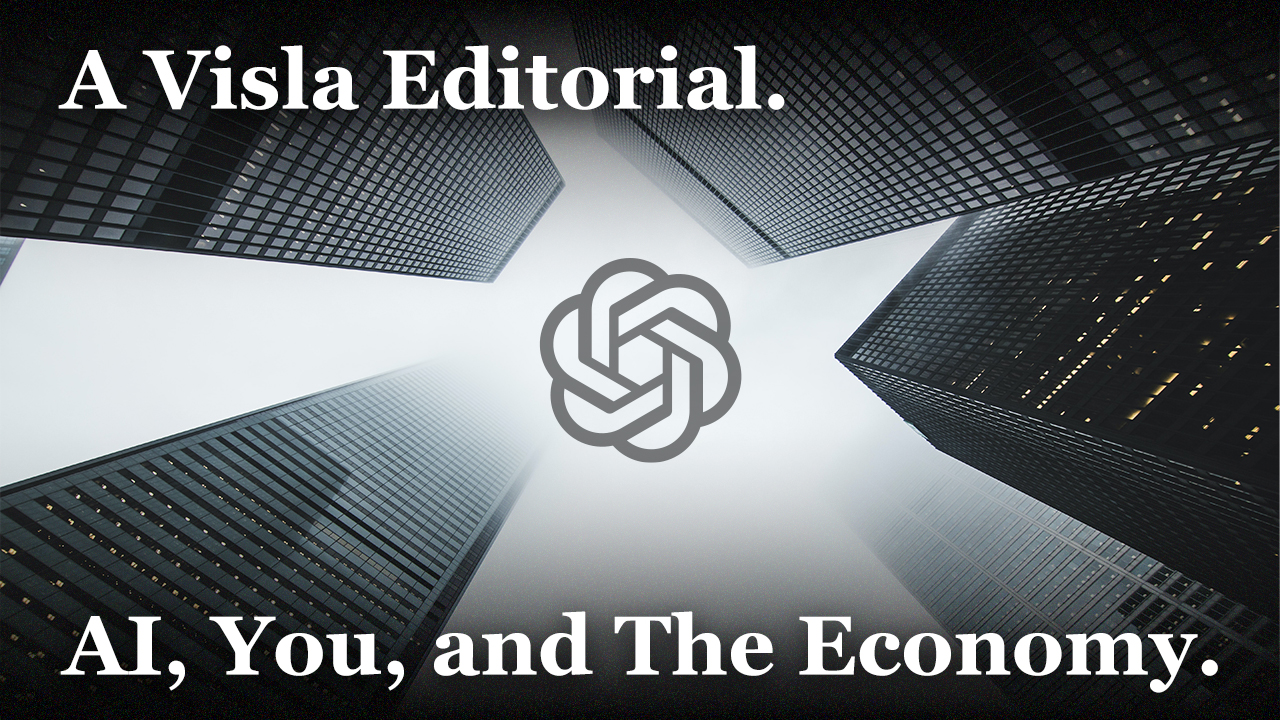Navigating the AI-driven future? Wondering, “is AI good for the economy?” Well, you’re not alone! Dive in to unpack the myths, the fears, and the actual data about how Artificial Intelligence influences jobs, wages, and economic structures.
Discover surprising remedies for modern-day anxieties about automation and employment, all while focusing on the question that’s on everyone’s mind: Will AI steal your job or be the key to unlocking a more prosperous, efficient economy? Keep reading to find the answers that might just put your mind at ease.
Why Do Jobs Still Exist?
In an era where machines execute tasks with astounding efficiency, the question inevitably arises: why do jobs still exist? Machines easily outpace humans in many functions, from lifting heavy loads to speedy transportation.
So, why the continued need for human labor? Enter Polanyi’s Paradox, which suggests that humans possess tacit knowledge—skills we understand intuitively but find difficult to articulate. This makes certain tasks nearly impossible to automate. For example, complex problem-solving, creativity, and emotional intelligence remain realms where machines and AI falter.
Although a forklift can easily lift 50,000 pounds, it lacks the ability to negotiate a business deal or provide emotional support. Essentially, jobs persist because machines and AI can’t replicate every human skill.
In Fact, Your Job Is Probably Pretty Good
Despite the looming anxiety that machines and AI could one day replace human jobs, the reality seems far less grim. When viewed through a historical lens, most jobs today are actually pretty decent.
In the United States, for instance, the average person earns significantly more and works fewer hours compared to previous generations. The mature U.S. economy might grow at a modest 2-3% annually, yet this stability allows for better working conditions, employee benefits, and opportunities for professional development.

Source: FRED
In fact, technological advancements often lead to the creation of new industries and roles that didn’t exist before. Therefore, while it’s easy to fear that machines could make human labor obsolete, the evolving landscape usually paints a much brighter picture.
Automation Makes Things Better – Even The Economy
When you think about automation, don’t just consider factory robots or self-driving cars; think about how it boosts the economy. Automation leads to productivity gains, creating a positive ripple effect across various sectors.
How does automation contribute to economic health? Simple. It enhances productivity by completing tasks more efficiently, allowing businesses to scale and innovate. This productivity boost spurs greater demand for specialized labor, as jobs diversify to oversee, maintain, or enhance automated processes.
Aggregate demand for goods and services also increases, particularly if the cost savings from automation lead to higher wages or lower prices for consumers. Imagine having extra income—chances are, you’ll spend it on services you desire but previously couldn’t afford. This increase in consumption further fuels the economy, creating a virtuous cycle of growth and prosperity.
AI Probably Won’t Get Rid of Your Job
The narrative that AI and automation will eliminate jobs en masse often lacks nuance. While it’s true that the nature of work has evolved—agriculture, for example, now represent a smaller slice of the employment pie—the sky isn’t falling.
Unemployment rates may fluctuate, but labor force participation rates among prime-age individuals in the USA have remained relatively stable or even improved over time. Why? Because automation replaces tasks, not entire jobs. For instance, a cashier might use automated systems to facilitate transactions, but customer service remains a human-centric aspect of the role.
Even in highly automated sectors, tasks requiring human touch, intuition, or complex decision-making remain. So, rather than putting you out of work, AI and automation will more likely change the nature of your work, perhaps even making it more interesting and rewarding.
AI as Your Coworker?
In the fear-laden conversation about AI and jobs, an important aspect often gets overlooked: humans and automation typically complement each other. If automation were the omnipotent force some imagine it to be, jobs would be scarce.
Yet, employment rates remain robust, and many industries are experiencing labor shortages. That’s because tasks and roles evolve to incorporate the benefits of automation while retaining the human element for functions that machines can’t replicate. Sure, while an AI might be able to generate a video with ease, you still need to feed it the idea and refine the output.
Think of AI as your coworker, not your replacement. From data analysis to customer interaction, many tasks can be made more efficient with AI, leaving humans to tackle more complex, nuanced duties. This synergistic relationship not only preserves jobs but also makes them more engaging and fulfilling.
However, Not Everything Is Perfect
Transitioning to an automated or AI-driven workspace isn’t without challenges. For one, relocating for a new job often meets with substantial frictions—high moving costs, rigid housing markets, and the emotional strain of uprooting one’s life. In the United States, housing markets can be particularly unforgiving for individuals wanting to move, adding a layer of complexity to job transitions.
Moreover, retraining programs frequently fall short, as they often can’t adequately prepare workers for entirely new career paths in a short span of time. These barriers warrant attention as society navigates the integration of automation and AI into the workforce.
If Your Job Changes Because of AI, Retraining Is Hard
The conversation about AI’s impact on jobs isn’t complete without discussing the challenges of retraining. While the prospect of pivoting careers might sound straightforward, the reality can be far more complicated.
Retraining might work well for those with higher education and robust soft skills. However, for high school graduates or college dropouts, switching careers often proves to be a herculean task. One key issue is that retraining programs frequently fail to align with the actual demands of the labor market. Whether it’s a mismatch of skills taught or the rapid pace at which industries evolve, these programs often end up being too rigid or outdated.
Big Problems in the Economy Are Likely Not Due to AI
When assessing issues like job loss, wage inequality, or education polarization, it’s crucial to note that AI and automation probably aren’t the culprits. These economic challenges often stem from larger structural issues.
Take, for example, wage inequality. This problem exists primarily due to systemic factors like tax policies, rather than technological advancements. Likewise, job loss in certain sectors may result more from globalization or shifts in consumer preferences than from automation.

Source: Pew Research Center
Fortunately, these issues aren’t insurmountable; they can be addressed through political will. By revising tax structures, rethinking welfare programs, and improving housing policies, society can create a more balanced economic landscape that benefits everyone—regardless of the level of automation or AI involvement.
What if AI Becomes Everything We Think It Could – And More?
Imagine a world where Artificial General Intelligence (AGI) becomes a reality, capable of outperforming humans in nearly every domain. This sci-fi-esque scenario sparks both excitement and anxiety. But if AGI propels society into a post-scarcity era, what then?
In a post-scarcity society where AGI can fully replace human labor, the issue may not lie with AI itself, but with distribution. Put simply: who gets what? This challenge isn’t new; it’s a perennial issue in any society, and some argue it’s a foundational problem of all life. The capacity to produce abundant resources—thanks to AGI—won’t automatically translate to equitable access to these resources. Even if AGI can generate enough food, medicine, or other goods to meet everyone’s needs, mechanisms still have to be in place to ensure fair distribution.
In other words, technology may solve the problem of scarcity, but it can’t necessarily solve the problem of inequality or imbalanced resource allocation. That’s a challenge that demands not just technological innovation but also social, ethical, and political solutions. Therefore, as AGI takes strides toward becoming a reality, the conversation must also include how to handle the age-old issue of distribution in a fundamentally new context.
Most Problems Can Be Fixed, if We Try
Navigating the complexities of AI’s impact on the economy might seem like an uphill battle. Yet, remember this: solutions do exist. Whether dealing with the challenges of job displacement, retraining, or the equitable distribution of resources, the tools for resolution lie within reach.
Despite the hurdles associated with worker retraining or distribution inequities in a world with AI, these issues are solvable with thoughtful policy, social innovation, and public will. For instance, retraining programs could become more flexible and better aligned with market demands through regular reviews and updates. Likewise, frameworks could be developed for fair resource distribution in an AGI-driven world, taking cues from successful models in other sectors or countries.

Source: Congressional Budget Office
So, while it’s easy to get caught up in the doomsday narratives surrounding AI and its economic implications, a balanced perspective reveals that challenges also present opportunities for improvement and innovation. Every problem that arises in integrating AI into the economic landscape is an invitation to adapt, innovate, and evolve, setting the stage for a future that benefits from technology while retaining a focus on equitable human well-being.


Leave a Reply
You must be logged in to post a comment.